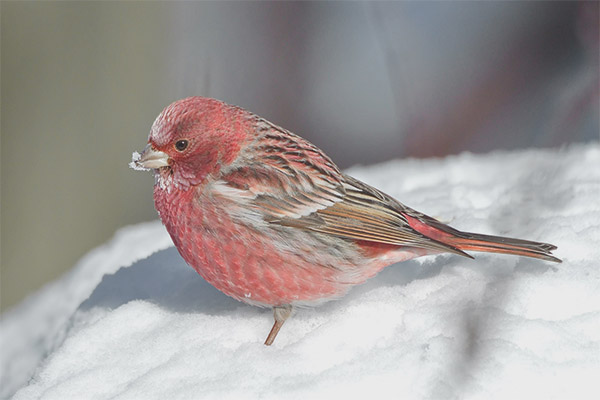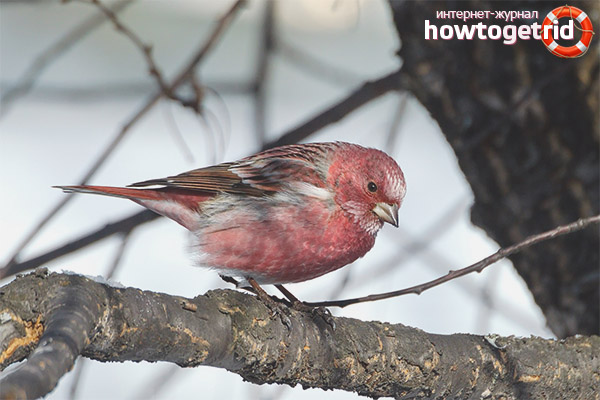The content of the article
Siberian lentils, like most birds of this species, have a short and sharp beak, the length of which does not exceed 12 millimeters. They belong to the family of the finch, which are attributed to the group of passer-shaped. The tail of these birds differs in length; a characteristic notch is discernible in the tail section, the wing wing part of their wing consists of 4 feathers, the fourth one being small in size. The total body length of the bird is 170 millimeters, and the width of the wingspan reaches 278 millimeters.
Description
In flight, lentils, like most members of the finch family, use a non-linear trajectory. In addition, they are distinguished by a noticeable length of the tail and eye-catching pink-crimson coloration of the plumage of males. Another Siberian lentil differs from other birds of this species by the presence of pink shades in the coloring of females.To move on the ground uses his fingers for short jumps.
The lentil uses a quiet intermittent whistle, reminiscent of the signal of the blood orangecake, as a calling signal. Most of the time she spends in silence, but rare moments of her singing accompanies theatrical performances. Lentils, emitting a melodious whistle, spread its wings and draws in its head when the singing ends, it shakes its wings and tail, sinking in this pose.
The main shade of the plumage of the female Siberian lentils consists of a pale brown color with characteristic dark patches.throughout the upper body. Its middle part of the abdomen, the area under the tailwheel and the inner part of the wings has a whitish color. The female's loin is colored pink and her entire body is covered with a slight pink bloom, resembling a view through pink glass.
The iris of these birds has a dark brown color, their beak is colored yellow-brown with a dark end, and their legs are also colored yellow-brown. The color of young individuals in general resembles the coloring of females, but is characterized by more dull tones.
Habitats
This species of birds received wide distribution in the middle and eastern part of Siberia. Also, Siberian lentils can be found in the middle part of the Lower Tunguska and in the mountainous region of northern Baikal. The nests of these birds are found on Sakhalin, in the Sayan mountains and north-western regions of the Altai, in addition, they are found in Mongun-Taiga and in some areas of Tanu-Ola.
In winter, these birds reside in most regions of Altai, the northern outskirts of Mongolia, in the territory of Transbaikalia, on the coasts of the Amur River, in the areas of the Ussuri region, some regions of China, located north of Shansi.There were cases when this bird was met in Japan.
Diet
The basic diet of Siberian lentils consists of grain of wild-growing and selection cereals, seeds of various plants, like trees, bushes and grasses. In addition, lentil uses all sorts of berries and young shoots of cedar as food.
The period of breeding offspring
Many facts about the life of these birds are still unknown. No one had to meet the places in which these birds make nests, and there is also no evidence of the size and structure of the lentils nest. In addition, today there is no information about the nature of the behavior of these birds in the mating season, models of the social structure of life, the time of formation of the clutch, the type and size of eggs.
It is known that the chicks of the Siberian lentils are born in the second half of June, and leave their nests closer to the middle of July.During this period, young individuals were observed who were able to fly reasonably well, by that time the brood composition had already been broken and the young individuals were kept one by one. This fact was recorded in the area of Lake Oysk at the beginning of the 2nd decade of July, and later received confirmation on the Stanovoy Range in the second half of July.












To send